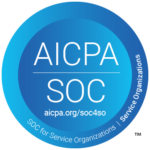Referral marketing is one of the most effective strategies that businesses – including MSPs – can employ to acquire new customers. Most would-be buyers are seeking referrals and most existing customers are willing to give them, but the connection rarely occurs because most companies fail to ask their existing customers for a referral.
Referrals are a great opportunity for MSPs of all sizes to efficiently grow their revenue – you just have to start asking.
Why Referrals Matter
Referral marketing has a high conversion rate and return on investment. A Nielsen Global Online Consumer Survey of over 25,000 Internet consumers from 50 countries found that people are four times more likely to buy when referred by a friend or colleague. A separate study of 10,000 customers of a leading bank by Wharton School of Business researchers also found that the lifetime value for new referral customers were, on average, 16 percent higher.
Referral marketing may also be a lot easier than you think. According to Texas Tech, 83 percent of satisfied customers are willing to refer a product or service but only 29 percent actually do so – the key is asking for a referral. SaaSquatch Data Science found that the average customer will refer nearly three people, on average, when using copy-and-paste, email, and social media channels like Facebook and Twitter to recommend a brand.
From a buyer’s perspective, 84 percent of B2B decision makers start the buying process with a referral, according to Heinz Marketing. The researchers also found that nearly 90 percent of sales reps, 82 percent of sales leaders, and 78 percent of marketers that interact with customers on a regular basis say that referrals are the best type of leads.
Heinz Marketing researchers say companies are three times more likely to achieve their revenue goals when marketing departments manage referral programs, but they estimate that only 10 percent of companies have marketing departments handle these functions. In other words, referral marketing is a tremendously successful strategy for most businesses, but few companies have formal programs in place.
How to Ask for a Referral
Referral marketing can be intimidating since you’re asking a current customer to put their reputation on the line to recommend your business. In addition, the idea of creating a referral marketing strategy and ensuring that it is properly executed is a daunting task. This is especially true for smaller MSPs that may not have a dedicated marketing department. But, as the statistics showed earlier, the payoff can be well worth the effort.
Here’s a six-step process for effectively running a referral program:
- Identify the Right Customers – You want to look for long-term customers that have experienced the fewest problems since they’re the most likely to recommend you. After all, a brand-new customer or a client that just experienced a problem may not be willing to put their reputation on the line for you. Business intelligence software can be extremely helpful when compiling these kinds of lists and automating the process.
- Start the Conversation – A good way to initially approach these customers is through a quick checkup. For example, you may ask what they like most about working with you and what you could be doing better. A customer that has no negative things to say is ideal for the referral process, while any suggestions can be helpful in improving customer service and moving toward a referral down the road.
- Find an Incentive – Offering a reward increases the likelihood of a referral, according to the American Marketing Association. The researchers note that the size of the reward doesn’t matter, but it should be something that’s valuable to the customers. This could be a free service that is not typically included in their service agreement – which could evolve into a future upselling opportunity – or a referral of your own for their firm.
- Make the Ask – There are many different ways to make an ask and the best decision depends on your specific business and clientele. The simplest way is to ask for an email introduction that gets your foot in the door, but you may also want to consider more subtle options like including a link on a website, note in a newsletter, in email signatures, or during quarterly business reviews.
- Follow–Up – It’s important to follow-up with both the referrer and the person that was referred after making the ask. The person that was referred may require several sales touches before becoming a client – even if they came from a referred source. And, the referrer will be more likely to make additional references if you let them know that it was a successful effort and the incentive was delivered as promised.
- Make Improvements – The best referral programs are continuously improved over time. By experimenting with incentives or adjusting how the ask is made, you can improve conversion rates and accelerate your revenue growth.
There is no bad time to approach existing customers and ask for a referral, but in general, it’s a good idea to ask customers that you have successfully helped in the recent past.

Tips for Maximizing Referrals
Successful referral marketing depends on happy customers. Customers that are truly impressed with your service will talk about it with their friends and colleagues and those that aren’t impressed won’t hesitate to provide negative feedback. Most MSPs excel at managing technology (or else they wouldn’t be in business for long), but the most successful businesses are equally focused on the people using the technology.
Here are some tips for ensuring that clients are happy and ready to make referrals:
- Focus on People – You need to provide exceptional client service if you’re looking for referrals. Create a culture of service among all employees that interact with the end user, which means going above and beyond what’s expected and ensuring that customers are fully satisfied before closing a ticket or ending a conversation.
- Use Feedback Loops – Put systems in place to gauge how satisfied customers are, whether automated surveys or follow-up conversations, and then make changes to improve customer satisfaction over time. After all, you can’t improve something you aren’t measuring.
- Communicate Effectively – Acknowledge the receipt of client support requests immediately and set expectations for the next steps. By setting the right expectations, you can avoid miscommunications that can be frustrating for both parties.
The Bottom Line
Referral marketing is one of the most effective strategies for businesses to acquire new customers. While they can be intimidating to start, most people are willing to refer products and services if they’re satisfied. The process above is a great way to start developing a referral marketing program, while the tips for keeping clients happy can help maximize the number of potential referrers over time.





